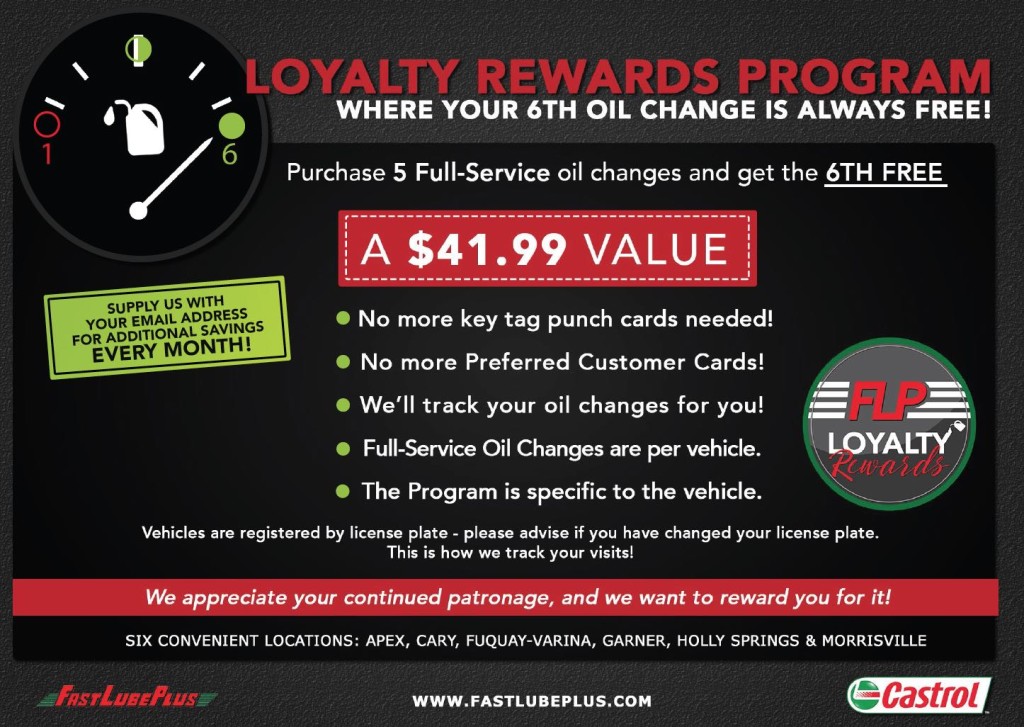
Now for a limited time, show your professional I.D. to get 50% Off Any Oil Change.
During the COVID-19 crisis, Fast Lube Plus is offering 50% off Oil Change for Healthcare Providers and First Responders to thank them for being on the front lines. We appreciate you! Just show your ID for 50% any oil change.
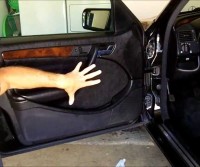
The average American commute is a painful 26.4 minutes long! That means lots of time in your driver’s seat, lots of oily fingers touching the dials, and plenty of dirt and grime from getting in and out.
Knowing that, shouldn’t you properly maintain your car’s interior? It’s easy, affordable, and anyone can do it! Not only does it make that commute more comfortable, but it helps the cabin materials last longer and look great.
Dashboard
Dashboards are typically made from either leather, vinyl, or plastic (or a combination of the three.) Each type of surface requires its own special care, but leather is the most fickle. Your owner’s manual will likely indicate if your dash has a special material.
For vinyl, use mild water and a clean microfiber cloth. While some people prefer the shiny aesthetic of Armor All, the greasy finish is unpleasant and it can crack thinner plastics. If you have to use something stronger than water, consider a diluted all-purpose cleaner or non-greasy Meguiar’s. Be extremely careful cleaning plastics around radios and HVAC controls, as they can scratch easily.
Leather – including seats – requires special care. Get leather cleaner from a trusted brand like Meguiar’s or Mother’s, and follow up with a high quality leather conditioner. As mentioned above, always read your manual for specific pointers!
Carpet and Upholstery
The obvious solution here is to vacuum thoroughly and often. Your corner store’s coin vac works well enough, but personal models offer variable speed control and the ability to spit air out. For vacuuming hard to reach places (especially under seats) it can help to blow debris out before vacuuming it up. You should also invest in a sturdy brush for foot wells and carpet mats. Be gentle, though!
Much as house carpet requires regular shampooing, your car’s upholstery sometimes needs to get wet. While professional detailers have steam machines, you can shampoo yourself with a gentle brush and the proper soap. Just allow plenty of time, because air drying takes a while.
Glass
Good ol’ Windex works wonders on car windows, but you can also use a mixture of water and vinegar. The real key lies in the applicator; use a soft, high quality microfiber towel for the best results. To reduce streaks, make sure you buff properly: firm, in a circular motion.
Does your car need under the hood maintenance? Fast Lube Plus offers oil changes, inspections, and other routine maintenance to drivers in Cary, Holly Springs, Fuquay-Varina, Apex, Morrisville, Garner and the greater Raleigh-Durham area. Contact us today and let’s keep your car running great!

Taking your car for an inspection can feel like a hassle. But in reality, your yearly NC inspection is not just a legal todo: it’s essentially a check-up. It’s an important tool for identifying early signs of wear and tear and for scheduling needed maintenance.
When the skilled technicians at Fast Lube Plus inspect your vehicle, we look at two areas: safety and emissions. Today we’re going to clarify what that means and why it matters!
Safety Inspections
Your car’s most basic functions are boring compared to your in-dash GPS or leather seats, but they’re also the most important. Any vehicle on the road is expected to have a few key parts work perfectly:
- Brakes (including the parking brake)
- Headlights
- Windshield wipers
- Signal, brake, and plate illumination lights
- Steering
A basic list, indeed. But the safety inspection serves a much more practical purpose of getting an experienced mechanic to look at your car, and in the process of the inspection they can notice items going bad. Things like your brakes, tires, and other wear items are best replaced before they break. If they get too far, you (and your wallet) could be in serious danger!
Avoid surprises by checking for those basic functions ahead of time. Listen for squealing brakes, and have a friend look at your tail and brake lights to make sure they work.
Emissions Inspections
This is where things get a bit more complicated. Since 1995, all new gas-powered cars have come with the OBDII (On-Board Diagnostics) system. This system can detect specific faults with your car – though not necessarily the cause – and store a code in its memory. A technician or off-the-shelf reader can read these codes.
When there’s a problem, your car’s check engine light comes on. Unfortunately, a CEL is a one-way ticket to a failed inspection! Many CELs are linked to unacceptable levels of certain gases in your exhaust, which is why it matters so much.
It’s easy to ignore a check engine light when your car runs normally, but it typically indicates a problem that will either a) get worse or b) cause a failed emissions inspection. Check it out early to prevent annoyances on inspection day!
Are you due? Fast Lube Plus performs certified North Carolina State Inspections at our locations in Apex, Fuquay-Varina, Cary, Garner, Holly Springs, and Morrisville. Drop by anytime and our experts will take care of you!
It’s easy to ignore a check engine light when your car runs normally, but it typically indicates a problem that will either a) get worse or b) cause a failed emissions inspection. Check it out early to prevent annoyances on inspection day!
Are you due? Fast Lube Plus performs certified North Carolina State Inspections at our locations in Apex, Fuquay-Varina, Cary, Garner, Holly Springs, and Morrisville. Drop by anytime and our experts will take care of you!

So much of car discussion is focused around going. How fast is it What kind of gas mileage? What’s the fuel tank range? But just as getting there is important, so is arriving, and that requires good brakes!
Brakes are an often overlooked maintenance item. They’re put off and ignored until they become dangerous. Do yourself a favor: learn about your brakes and learn how to take care of them!
There are two primary types of brakes, each with differing maintenance needs.
Disc Brakes
Disc brakes are by far the most popular type of brake. Their mechanism of action is simple: friction. A pair of metal parts called calipers hold pads composed of various metal or ceramic materials. These calipers are connected by tubes to a reservoir of fluid under your hood. When you press the brake pedal, the fluid is pressurized, clamping the pads down on a shiny, silver disc called a rotor. Since the rotors are attached your axle, this stops your car.
The most obvious wear item for disc brakes is the pads. These wear out at different intervals depending on what they’re made of; ceramic brake pads are expensive, but usually last longer. You may also need to have your rotors turned, basically resurfaced on a machine to renew their stopping power.
It’s a common myth that brake pads only need to be replaced when they start squeaking. In reality, squealing may already mean that your brakes are damaged! Worn pads can damage the calipers themselves, which are far more expensive to replace. Have your brakes inspected during any routine service to save you money in the long run.
Drum Brakes
Drum brakes are a cheaper, older style of brake that have less stopping power than discs. On lower-end models, you will sometimes see them used on the rear wheels. Since the front brakes do most of the work, rear drums are a safe way to save money in economy cars.
They work on the same principle of friction. The difference is that they lay inside a closed metal drum. When you press the pedal, metal strips called shoes press on the inside of that drum, causing friction and slowing down the car.
Even though your front brakes do most of the work, your rear brakes have one very important function: your emergency brake! Though they will last longer than your front brakes, it’s important to have your brake shoes regularly inspected.
Need new pads, shoes, or a brake fluid change around the North Carolina Triangle? Fast Lube Plus offers prompt brake service at fair prices. Come in today and let’s get you taken care of!
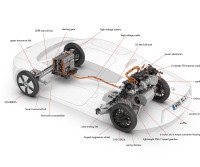
Unless you have an off-road or 4×4 vehicle, you likely never think about how your car’s power gets to the road. This is called your drivetrain, and it describes which wheels on your car receive power in order to move it forward. It matters a lot for understanding car marketing, maintenance, and how to drive in severe weather!
The last part isn’t as much of a concern here in North Carolina’s triangle, but it’s still important for the occasional blizzard or downpour. The first two matter year round, and make you a smarter consumer! Today we’ll talk about major kinds of drivetrains.
Front-Wheel Drive
Front-wheel drive – or FWD – is by far the most common drivetrain. This layout connects your engine to your front wheels, with the rear wheels rotating freely. FWD emerged in the 70s and 80s due to the compact layout – perfect for small cars during the fuel crisis – and lower building costs.
FWD cars do not easily spin out, making them ideal for the average driver. Engine weight over the drive wheels also makes them better than rear-wheel drive for bad weather. However, FWD cars struggle with high power engines and precision turning, making them a poor choice for sports cars. Exceptions to this rule include “sport compact” cars like the Volkswagen GTI.
Front-wheel drive cars have one unique maintenance item: CV axles. These complex mechanisms can wear out over time, and cost several hundred dollars to replace.
Rear-Wheel Drive
Rear-wheel drive (RWD) cars are the oldest type of drivetrain. They send power through a fast-spinning driveshaft to a differential that drives the rear wheels. Your steering remains in the front.
Rear-wheel drive is capable of much more power than front-wheel drive. As a result, it’s the layout of choice for sports cars, luxury cars, and trucks. However, RWD cars do not have the traction benefits of FWD, making them exceptionally poor choices for severe weather.
Unique RWD maintenance is mainly centered on the differential. Its fluid may need to be regularly changed.
Four-Wheel and All-Wheel Drive
Four-wheel (4WD) and all-wheel drive (AWD) operate on the same principle: applying power to all four wheels of a car. They differ in their marketing. 4WD is usually a part-time feature that the driver can turn on or off, like in many SUVs. AWD is usually on full-time (as in most Subarus) or activates when the car detects a loss of traction (like in the Honda Pilot or Nissan Rogue).
AWD and 4WD have superior traction in bad weather, allowing even the weakest engine to work its way out of snow. However, full-time setups lessen gas mileage, and even part-time setups add fuel-guzzling weight.
Full-time AWD cars must have their tires rotated regularly; uneven tread can cause the drive system to break. All setups may require regular changing of differential fluid.
Does your SUV, sports car or family sedan need maintenance? Fast Lube Plus offers service to all vehicles in the Triangle area. Call us today or drop by!
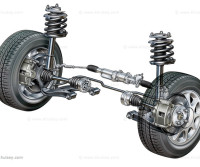
There’s a lot of talk about your car’s tires, and rightfully so. But that rubber is guided towards the road by a complicated assortment of joints, bolts, and metal pieces. It’s what keeps your car comfortable on the highway and on twisty mountain roads: your suspension.
As one of the most hidden parts of your car, suspension maintenance is easy to ignore. It’s also one of the hardest worked. Suspension maintenance isn’t as frequent as other parts, but it still pays to stay on top of it! Here are some parts of your suspension you should know about.
Axles and CV Joints
Own a front wheel drive car? Unless you have a truck or a sports car, you likely do. All front-wheel drive cars use a CV joint (sometimes called a CV axle) to transfer power from the transmission to the wheels. The unique layout of front-wheel drive cars requires a specialized axle with a very flexible joint system, covered by a rubber boot. Over time this rubber boot can crack, removing the joint’s lubrication. Not a good thing to happen while you’re driving!
Control Arms
Your wheel is connected to your car’s frame by a forked metal part called a control arm. As your wheel bounces across the road, the control arm rapidly moves up and down to compensate for the motion. Most control arms are long-lasting, and aside from excessive salt will last a long time. The weaknesses are the rubber and metal bushings that facilitate that motion; have your mechanic check them for wear and tear.
Shocks
Shock absorbers live up to their name: they smooth the motion between your wheels and the body of your car, making bounces more graceful. But when they break, it’s more than an issue of comfort! Bad shocks cause premature tire wear, which gets expensive fast. They can also cause your car to sag, damaging your undercarriage during bumps.
Ball Joints
Your steering system’s final step is at your ball joints, small metal joints that allow steering knuckles to turn your wheels. When they break, you can lose control of your car! Signs of wear include a cracking or groaning sound when you turn the wheel. If you start hearing those noises, you need to have your ball joints checked as soon as possible.
***
Fast Lube Plus offers professional automotive guidance to residents of Cary, Fuquay-Varina, Holly Springs, Apex and Morrisville. Call us now or drop by one of our locations, and let’s get you back on the road!
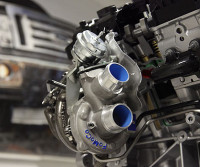
You’ve probably seen a lot more “turbo” emblems on the road lately. That sounds fast! What on earth is it doing on the back of a Hyundai?
Turbos are a great example of high-end technology for ordinary people. While they make Porsches and Ferraris go faster, they can also save your family sedan some serious gas. Today we’re going to talk about how turbos work and how to maintain them!
Bigger Isn’t Always Better
To understand a turbo, you first have to understand how a car engine works. Your engine is a giant air pump: air gets sucked in, explodes, and then gets spit out. That explosion makes a bunch of connected parts move around, moving your wheels.
With that in mind, engines are limited by how much air they can fit in themselves. This is a measure called displacement, and it’s usually measured in liters. You may recognize the Volkswagen 1.8, or the Mustang 5.0.
As the Mustang indicates, engines with higher displacement usually have more power. But remember that explosion that happens in there? Bigger engines require more gas to facilitate that explosion. That’s why your 7.0 Suburban gets 15 MPG!
Big Things in Small Packages
A turbo solves this problem by compressing the air that’s pushed into your engine. When air is compressed, you can fit more in a smaller engine. The turbo is effectively a self-sustaining system: it’s powered by your engine’s own exhaust. So the faster you’re going, the faster the turbo moves. This is why some turbo cars experience “lag” when you first hit the gas; the turbo has to have an initial supply of power to start working.
A small engine with a turbo is very appealing. You get the gas mileage of a little car with the power of a bigger car. That’s why Ford calls their turbo engines “EcoBoost:” it’s the best of both worlds. If you turbo a big engine…well, you get something like the Bugatti Veyron.
Your next car will likely have a turbo, and get better gas mileage than ever before.
Maintaining a Turbo
Most turbo cars – especially newer ones – don’t require any more maintenance than a normal car. But they do require you stay on top of regular maintenance! Your turbo uses the same fluids as the rest of your engine, including oil and coolant. Because turbos are complex and run very hot, being late on your fluid changes and inspections can seriously shorten their lifespan.
Is your turbocharged car due for maintenance! The experts at Fast Lube Plus can help! Contact us today and schedule your appointment.
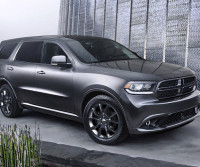
Down the road when that new car smell fades away and it doesn’t quite drive like it used to, you’ll want to know the extent of your auto warranty coverage. Knowing what parts, tune-ups and repairs will be covered — and for how long — will give you a complete picture of how to minimize your costs and what kind of insurance you’ll need in the long run. Here’s what you need to know to save you money and get the best service for your car when you need it.
Auto warranty 101
An auto warranty is a promise made by a manufacturer or dealer to cover repairs and defects over the course of a certain amount of time and certain amount of mileage. Most basic warranties are guaranteed for at least three years or 36,000 miles, but may vary according to the manufacturer.
Warranties are essential a legally binding pledge to fix or replace any parts that have broken down or are inherently faulty, including defective parts. Warranties do not cover regular maintenance and will not cover breakdowns caused by accidents, acts of nature, lack of proper maintenance, contamination of fluids or fuels, collision, fire, theft, negligence or abuse.
There’s a basic checklist of questions all consumers should have answered before purchasing a car warranty, according to the Federal Trade Commission, including length of the warranty, the point of contact for service, what parts and repair problems are covered, as well as any conditions or limitations on the warranty.
What’s covered?
Different levels of warranty coverage exist, so it’s important to understand the limits and umbrella of coverage before purchasing. These are the most typical types of warranty your car dealer will offer:
Basic “bumper-to-bumper” warranty: This is the most general coverage that pays to repair defects in factory-installed parts.
Drivetrain/Powertrain warranty: Covers the engine, transmission and transaxle parts. This warranty tends to last longer than bumper-to-bumper.
Roadside assistance: Covers towing costs and tire changing if the car breaks down during travel.
Rust or corrosion warranty: Covers rust in sheet metal parts of the car.
Federal emission warranty: Covers repairs needed to correct defects in parts that would cause the car not to meet Environmental Protection Agency standards.
How drivers can maintain their warranty
Regular car maintenance and inspections are necessary to guarantee that a warranty won’t be voided. Typically, routine maintenance includes oil changes, tire rotations, fluid checks and flushes, brake pads, belt replacement, etc. A warranty will remain valid no matter who performs the repairs, meaning you can use your own mechanic or shop — not just the dealer’s service department.
What does auto insurance do that car warranties don’t?
Under car warranties, the manufacturer makes a guarantee to the car buyer regarding the condition of its product. In case car parts do not function as intended, a warranty will cover the costs to repair or replace the part, as well as car rentals due to repairs, and potentially corrosion/rust.
Insurance, on the other hand, is an obligation on the part of the insurer to take on financial protection or reimbursement for the risks that are inherent with driving. Every state in the U.S. except for New Hampshire requires drivers to purchase some level of auto insurance to cover accidents, collisions, car rentals and possibly roadside assistance.
Service contracts or “extended warranties”
When a warranty runs out, car owners may choose to purchase a service contract to provide repairs or maintenance. Vehicle manufacturers, auto dealers and independent providers sell the contract separately from a warranty.
Service contracts will not provide benefits until after the initial warranty expires. Rates for these contracts depend on the life of the car — those with fewer miles and past repairs will get a better deal.
These contracts, while often referred to as “extended warranties,” are not actually warranties. Drivers who are interested in purchasing a service contract should practice due diligence to find the most trustworthy source, particularly from third-party companies.
However, since service contracts are optional and car warranties end, it’s most critical for car owners to purchase insurance that will be the most affordable, provide adequate coverage and be the best fit for their specific car.
Best and worst warranties on the market
There are three vehicle brands that standout for providing the best in basic and power train warranties: Hyundai, Mitsubishi and Kia. Each brand offers five years or 60,000 miles new vehicle limited warranties, and 10 years or 100,000 miles powertrain warranties.
Brands like BMW and Cadillac offer four years or 50,000 miles basic warranties and five years or 100,000 miles powertrain warranties. Other big brands such as Chrysler, Chevrolet and GMC all offer three years or 36,000 miles new vehicle limited warranty, and five years or 100,000 miles powertrain limited warranty
The most standard warranties on the market are offered by Honda, Nissan, Toyota, Ford, Mazda and Subaru with three years or 36,000 miles new vehicle limited warranty, and 5 years or 60,000 miles powertrain limited warranty.
At Fast Lube Plus we make sure our customers feel appreciated. We’re loyal to you and we hope you will be loyal to us. So we have created a Fast Lube Plus Loyalty Rewards Program as a way of saying thanks for trusting us with your vehicles. For every 5 Full-Service oil changes you purchase we will give you your 6th oil change FREE as a way of saying thanks for your loyalty. More details on the program can be found below and you can sign up for the program during your next visit to any of our 6 locations throughout the Triangle.
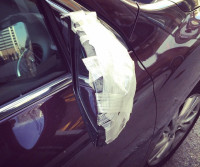
Perhaps you may have thought of resorting to do-it-yourself (DIY) techniques to repair your car, possibly as a way of saving costs incurred for every visit to the repair shop and as a personal challenge to improve your skills in car repair. While DIY techniques may prove to be both useful and enriching, they’re not always applicable to all aspects of car repair. Unless you’re a car technician yourself, you may not have all the time in the world to study all the ins and outs of car repair, which is why some complicated repair matters may not be covered by your DIY skills. To avoid the risk of aggravating your car’s condition, here are some car repair problems that shouldn’t be addressed with DIY techniques.
1: Replacing your worn-out timing belt
Once your car racks up more than 50,000 miles, you may want to have your timing belt checked. Being one of the more crucial wear-and-tear replacements, your engine’s timing belt has to be replaced once it breaks down because your car wouldn’t run properly after that. One thing that has to be considered about your timing belt is that it’s almost always one of the most expensive to repair. With components ranging between $450 and $1,000, you might as well repair your car’s timing belt all by yourself. However, a DIY approach to repairing timing belts is utterly inadvisable.
Several car owners have reported subjecting their cars to more expensive repairs after attempting to fix their timing belts by themselves. With engine damage being the inevitable result of failed DIY approaches to repairing timing belts, it is highly recommended that you don’t deal with your car’s timing belt by yourself. Ask for the services of a skilled car technician for having your timing belt problem addressed – paying between $450 and $1,000 for components plus service charges is definitely more bearable than subjecting your engine to at least $3,500 worth of repairs due to damage caused by DIY approaches.
2: Addressing your automatic transmission problems
If you own an automatic-transmission car, it’s best for you to have your car checked by a car technician one it encounter problems related to its automatic transmission system. Containing several minute components, your car’s automatic transmission system can be very difficult to manage through DIY approaches. Arteries for hydraulic fluid passage and precisely-fitted parts all make up automatic transmissions they can be very complicated to address on your own and it can subject you to very costly consequences once you make a mistake. Therefore, a car technician would best solve your car’s automatic transmission issues, given that they specialize in dealing with its ins and outs.
Your car’s automatic transmission system would most likely lead you to more repair costs if you deal with it improperly using DIY approaches. More often than not, maintaining your car’s automatic transmission system on your own may inadvertently lead to more damage owing to its sheer sensitivity. Thus, even seeming-simple maintenance procedures such as fluid change and flushing should be left to the care of specialized car technicians – their expert services ensures you of less costs and greater success, relieving you from the possibility of exposing yourself to greater costs by going DIY.
3: Dealing with overheating
Overheating is every car owner’s bane, not least because it emerges as a symptom of their car’s overuse. Dealing with the root cause of overheating through DIY approaches is a big no-no unless you’ve received ample training for dealing with cooling systems. Be that as it may, the fact that cooling systems repair is among the most advanced repair issues in cars leaves you with the services of a skilled car technician as the most cost-effective choice for resolving overheating. Otherwise, your DIY attempts to fix your car’s overheating problem would only lead you to suffer massive financial consequences.
4: Dabbling with the cause of your car’s faulty drivability
At some point, your car will definitely start exhibiting problems relating to drivability – failure to start properly, stalling and surging, and notifications telling you to check your engine are just some of the examples involved. Needless to say, those are the kinds of problems that can’t simply be solved by DIY techniques – they require a specialized form of training even skilled car technicians have struggled to perfect. With that, drivability problems shouldn’t be part of your DIY coverage – they are best left to the care of repair shops where car technicians have ample experience dealing with those issues.
Another thing most DIY connoisseurs have failed to understand is the fact that drivability problems require several pages of diagnostics to understand and resolve. Those diagnostics typically require further tests as well, given that codes pertaining to damage in drivability tend to involve other components as well. It is in that regard where DIY approaches have failed to address faulty drivability – just because the diagnostics mention specific codes doesn’t exactly mean that the problem is exclusive to the components mentioned. For that, your car’s drivability problems must undergo a series of repair sessions conducted by car technicians – that’s way more convenient and practical than solving the problem on your own and causing further damage in the process.
5: Solving your suspension woes
Your car’s suspension system may look very easy to deal with from the onset, but the reality is that it’s very difficult to deal with its complexities without proper training. That alone should serve as a warning against employing DIY techniques on solving suspension problems. There have been many instances already where DIY attempts to fix suspension have failed miserably, starting with the failure to deal with the massive force involved in putting a compressed coil spring in place. Replacing struts, arms, and bushings also require the specialized skills of car technicians, given the sophisticated order of their arrangement within your car’s suspension system. Considering as well that service charges aren’t too high as to merit amateur DIY approaches, having your car’s suspension system fixed by car technicians is undoubtedly a more cost-effective idea.
Any of our Fast Lube Plus Locations are more than happy to take the reigns to handle these issues. Give us a call to schedule now!

